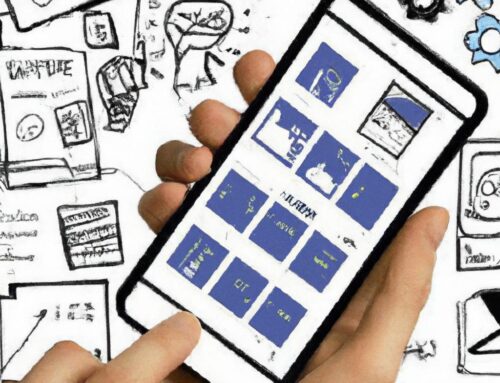In the fast-paced world of technology, the arrival of 5G has caused a seismic shift in the way we approach app development and functionality. As we dive deeper into this new era of connectivity, developers are finding themselves at the forefront of innovation, grappling with the challenges and opportunities that come with harnessing the power of 5G. Join us as we explore the impact of this groundbreaking technology on the world of apps, and examine how it is reshaping the landscape for developers and users alike.
Table of Contents
- – Revolutionizing App Development Through Faster Speeds
- – Enhancing User Experience with Low Latency Connectivity
- – Leveraging 5G Capabilities for Advanced Features and Functions
- – Challenges and Opportunities in Designing Apps for 5G Networks
- Q&A
- Key Takeaways
– Revolutionizing App Development Through Faster Speeds
With the emergence of 5G technology, the landscape of app development is speeding towards a new era of efficiency and innovation. The faster speeds offered by 5G networks are revolutionizing the way developers create and optimize apps, leading to enhanced functionality and user experiences. This advancement is setting a new standard for app performance and is poised to drive the evolution of the digital ecosystem.
Developers are now able to leverage the high-speed connectivity of 5G to implement features that were previously deemed too data-intensive or complex. This includes real-time streaming, augmented reality experiences, and seamless cloud integration. As a result, apps are becoming more interactive, responsive, and dynamic, offering users a more immersive and personalized experience. The impact of 5G technology on app development is reshaping the industry, opening up new possibilities for developers and setting the stage for a new wave of innovative applications.
– Enhancing User Experience with Low Latency Connectivity
5G technology has revolutionized the way we interact with mobile applications, offering lightning-fast connectivity that enhances user experience. With low latency connectivity, app developers now have the ability to create interactive and immersive experiences that were previously impossible. This new technology opens up a world of possibilities for app development, allowing for real-time interactions and seamless functionality.
One of the key benefits of 5G technology is its ability to support multiple connected devices simultaneously, providing a seamless experience for users. This means that apps can now be designed to work across multiple platforms and devices, allowing users to seamlessly switch between their smartphones, tablets, and other connected devices. With low latency connectivity, users can enjoy a smoother and faster app experience, reducing load times and improving overall performance.
– Leveraging 5G Capabilities for Advanced Features and Functions
With the advent of 5G technology, app developers now have access to a whole new realm of possibilities for creating advanced features and functions. The lightning-fast speeds and ultra-low latency of 5G networks open up a world of potential for enhancing user experiences and pushing the boundaries of app development. From immersive augmented reality experiences to real-time multiplayer gaming, the capabilities of 5G are revolutionizing the way apps are designed and used.
One of the key advantages of leveraging 5G capabilities in app development is the ability to seamlessly integrate complex functionalities that were previously limited by network constraints. Features such as real-time video streaming, instant content downloads, and IoT connectivity can now be implemented with minimal lag time, providing users with a smoother and more interactive experience. Furthermore, the increased network capacity of 5G allows for a higher volume of data transmission, enabling apps to handle larger amounts of information more efficiently. This opens up opportunities for developers to create more sophisticated applications that can process and deliver data at unprecedented speeds.
– Challenges and Opportunities in Designing Apps for 5G Networks
Developing apps for 5G networks presents both challenges and opportunities for designers. The increased speed and bandwidth of 5G technology allow for more advanced features and capabilities in apps. However, this also means that designers must adapt to new requirements and considerations to ensure optimal performance.
Some challenges in designing apps for 5G networks include:
- High bandwidth requirements: Apps need to be optimized to efficiently utilize the increased bandwidth of 5G networks.
- Low latency expectations: Users expect minimal latency with 5G technology, requiring designers to prioritize responsiveness in their apps.
On the other hand, opportunities in designing apps for 5G networks include:
- Enhanced user experience: Apps can offer more immersive and interactive experiences with the capabilities of 5G networks.
- New technological possibilities: Designers can explore new technologies such as AR, VR, and IoT integration to create innovative apps for 5G networks.
Q&A
Q: How will 5G technology impact the development of apps?
A: 5G technology is expected to revolutionize the way apps are developed by providing faster and more reliable connectivity, enabling developers to create more sophisticated and interactive applications.
Q: What new features or functionalities can we expect in apps with the introduction of 5G?
A: With 5G technology, we can expect apps to run faster, have better graphics, support virtual and augmented reality experiences, as well as offer seamless streaming and downloading of content.
Q: How will 5G technology improve the user experience of apps?
A: 5G technology will significantly enhance the user experience by reducing latency, enabling real-time interactions, smoother gameplay, and faster loading times for content.
Q: Will 5G technology open up new opportunities for app developers?
A: Yes, indeed. 5G technology will create new opportunities for developers to innovate and create apps that were not possible with previous generations of mobile networks, such as IoT integration and advanced data analytics.
Q: What challenges may app developers face in adapting to 5G technology?
A: App developers may face challenges such as ensuring compatibility with different 5G networks, optimizing apps for lower latency, and managing increases in data usage and network congestion.
Key Takeaways
As we navigate the ever-evolving landscape of technology, it is clear that the advent of 5G is poised to revolutionize app development and functionality in ways we have yet to fully comprehend. From lightning-fast download speeds to seamless integration of augmented reality, the possibilities are endless. As we continue to unlock the potential of 5G technology, app developers must stay ahead of the curve to ensure their creations are cutting-edge and user-friendly. Embracing this new era of connectivity will undoubtedly shape the future of mobile apps in ways we have yet to imagine. The journey to harnessing the full power of 5G technology has only just begun, and the possibilities are truly limitless.





